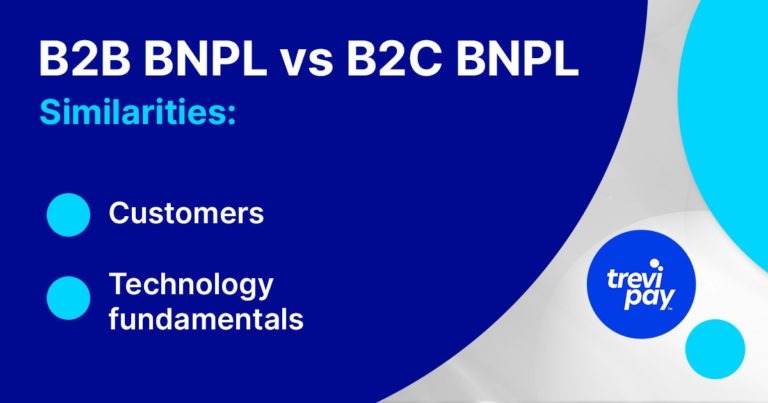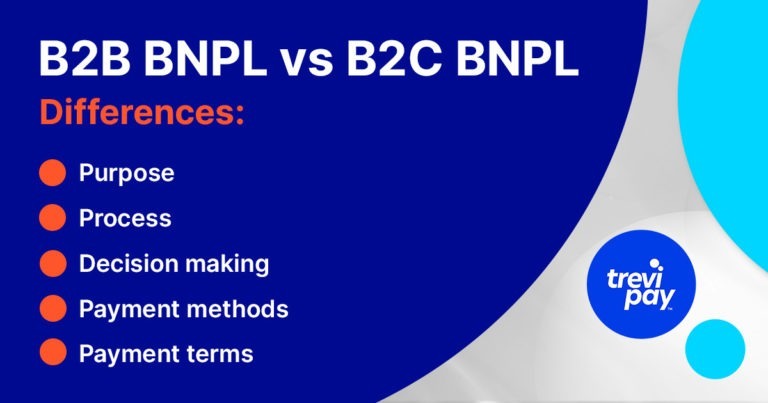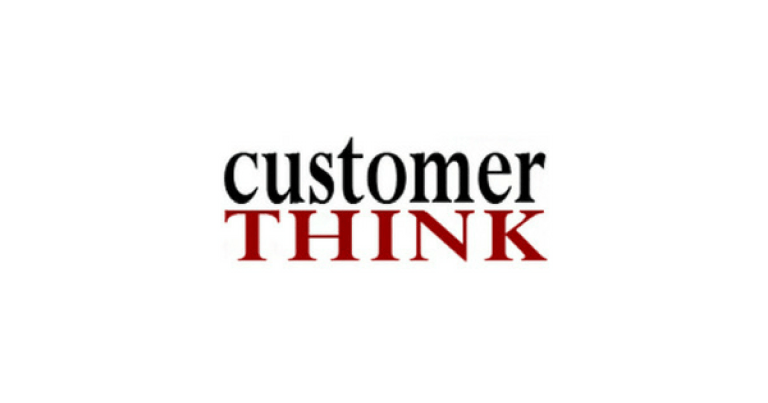A small modifier can make a big difference to what is being described.
I.e., a big cat is a type of cat and a hot air balloon is a type of balloon.
Each fundamentally resembles its respective category… but is also very different.
The same can be said of business-to-business (B2B) buy now pay later (BNPL).
It sounds like the solution popular with consumers, but for businesses. But B2B and B2C are different in many ways.
So, it’s worth asking: Is B2B BNPL just another form of BNPL or is it something unique?
Let’s answer this question and look closer at B2B BNPL.
What Is Buy Now Pay Later (BNPl)?
Buy now pay later (BNPL) is a type of payment plan that allows buyers to pay for purchases in installments over time. It is popular in physical stores and in eCommerce.
In the consumer market, it has exploded in popularity in recent years. Research by Finder found that there were 360 million consumers using BNPL in 2022. And Juniper estimates that this figure will reach 900 million by 2027.
Before we look more closely at BNPL for business, let’s briefly look at B2C BNPL for more context.
Business-to-Consumer (B2C) BNPL
BNPL in its business-to-consumer (B2C) form is well known. It’s a service that brands offer to retail shoppers that allows customers to spread a large purchase over several smaller purchases made at regular intervals.
BNPL is popular because it often features interest-free periods and no deposit requirements. Users can then access products that might otherwise have been too expensive to purchase on the spot.
This is appealing to many consumers. But there is some controversy around it. Critics claim that it encourages irresponsible spending and leads some users into debt.
Regulation has appeared in some countries to counter bad practices in the BNPL industry. These cover issues around excessive rates and misleading advertising.
Business-to-Business (B2B) BNPL
Business-to-business (B2B) BNPL is BNPL tailored for companies working in the B2B space. It is particularly popular in the growing B2B eCommerce field.
For example, a small business that supplies retailers might want to purchase $5,000 worth of goods from a wholesalers. Using BNPL, they can pay off their purchase over 6 months.
As with consumers, this leaves businesses with better cash flow than if they had paid straight away to buy everything upfront. This cash flow can then be used in other areas of the business.
Is B2B BNPL the same as trade credit?
B2B BNPL is a type of trade credit. However, trade credit also covers scenarios different to typical BNPL plans.
The term BNPL carries with it certain implications of point of sale (POS) accessibility and pre-determined payment installment options.
Trade credit, by contrast, can require a more lengthy approval process, credit value decisions, and setting payment terms unique to a particular business. In short, BNPL is much more convenient for most customers that trade credit in the short-term.
Advantages of B2B BNPL
B2B businesses using BNPL can increase their cashflow and their cashflow flexibility – this means that cashflow can be increased quickly and efficiently at short notice. To further streamline B2B transactions, businesses can benefit from integrating automated payment solutions into their processes.
It’s particularly useful when – for example – companies want to take advantage of discounts. They can get discounted rates that wouldn’t have still been available had they deferred purchases.
B2B BNPL is also more accessible than many other types of B2B loans and financing. Unlike traditional business loans, there are fewer credit checks and faster credit decisioning and onboarding experiences.
BNPL companies (i.e., companies offering BNPL services) tend to be alternative lenders, not traditional banks.
It’s common practice for them to both have industry expertise and be tech-savvy. This can bring unique value-added services like POS integration, online and offline embedded payments and other embedded financing solutions.
BNPL for B2B also offers a solution to smaller and newer companies that otherwise might not be eligible for traditional business loans.
It enables them to try a type of financing that is a simple and short-term commitment. This is preferable to risking being saddled with larger long-term debt.
B2B BNPL vs B2C BNPL
There are important differences between B2B and B2C BNPL that impact how these payment solutions are used and implemented. This section offers a brief overview of the key similarities and differences. For a more in-depth look, check out our detailed article: B2B vs. B2C
B2B & B2C BNPL Similarities

1. Customers
The B2B and B2C buying processes are different, but the buyers are the same.
In simple terms, B2B buyers are also B2C buyers. So, they already understand and trust BNPL as a convenient, secure and simple way to pay.
And they have gotten used to a seamless user experience with multiple payment options.
2. Technology fundamentals
The payment technology behind BNPL is more or less the same regardless of the commercial context it is used in. The same basic elements need to be integrated in order to enable and underwrite purchases without money being put down upfront.
A variety of technologies are used such as point-of-sale (POS) systems, mobile applications, automatic clearing house (ACH) processing and online payment gateways.
B2B & B2C BNPL Differences

1. Purpose
Business buyers make decisions in very different contexts from regular B2C customers.
In the business world, purchases are often necessities or investment-like decisions. Each payment is a means to an end or something made with the goal of gaining a financial return.
2. Process
B2C BNPL businesses handle high volumes of small transactions. As a result, the risk involved is relatively low.
The typical B2B BNPL provider, on the other hand, has to deal with smaller volumes of larger and more complex transactions.
Credit checks for underwriting buyers are often quick but need to consider more factors, such as sales data, longer payment terms and more.
They also need to integrate with the wider order-to-cash process. This means being in sync with customer relationship management (CRM) systems, accounting and invoicing solutions, which are a big part of the B2B process.
Collections
Collections are a big part of the business world. Falling behind with this important process can negatively affect businesses’ cash flow, which in turn can have a knock-on effect on other operations.
Some B2B financing solutions, such as invoice factoring, come with collections services.
B2C collections are usually more straightforward. Their late payment fees can actually benefit the BNPL company. Smaller average order values mean individual late B2C payments don’t negatively affect cash flow at the level they do for B2B companies.
B2B buyers pay transaction fees
The long net terms involved in B2B payments mean that BNPL providers often charge buyers BNPL transaction fees for using the service.
In B2C, however, it’s usually sellers who pay these fees. In return, they benefit from the resulting increased frequency, volume of sales, and market penetration that BNPL can bring.
2. Decision Making
B2B purchases usually involve an average of 6 – 10 decision-makers. These decision-makers might not all have the same motivations or goals.
For the B2B BNPL provider, there may be some practical consequences for the buying journey. For example, their sales team may have to have more interactions and negotiations with customers.
2. Payment Methods
B2B payments are unique. They often involve relatively slow lead times and a wide range of preferred payment methods and terms.
These differences are partly explained by the relatively high average order value, which makes them riskier.
In general, many consider B2B payments to be approximately 5 years behind their consumer counterpart. For example, PYMNTS report that 40% of all B2B payments are still made by paper check.
Understanding the range of B2B payment methods available, including traditional trade credit, invoice financing, and Buy Now Pay Later services, can help businesses select the best payment solutions to meet their specific needs.
However, slow progress doesn’t entirely explain the difference. Internal approval processes and high-value payments play a role, too.
Paying online
There are signs that other payment methods are increasing in popularity, especially payment options compatible with online sales.
3. Payment Terms
The basic concept of paying for something at a later date has existed in business for a long time. Net 30, 60 or even 90 terms are the norm for many B2B sectors.
So, spacing out B2B BNPL terms over relatively long timeframes is nothing new. In B2C BNPL, this concept isn’t necessary – though it does exist for other consumer financings options, such as car re-payments and mortgages.
B2B Financing
For B2B, effective credit management practices are crucial for maintaining healthy cash flow and ensuring the sustainability of deferred payment models like BNPL. BNPL is not the only B2B payment method to offer a deferred payment option. B2B financing (of which BNPL is one type) is a rich and varied field.
It includes traditional business loans, venture debt, equity financing, trade credit, invoice finance (invoice financing and invoice factoring), and more.
TreviPay: B2B BNPL Provider
In recent years, buy now pay later solutions have become very popular with consumers in retail. Even with higher levels of regulation, this growth looks set to continue.
So perhaps it is no surprise that the B2B buyers have also begun to use it, too. After all, many of them are also B2C buyers in their free time.
At TreviPay, we have a deep understanding of the unique nature of B2B transactions and the factors and potential sources of friction they carry.
Over the decades, we have repeatedly found new ways to innovate with online payments-processing, trade credit systems and solutions in the B2B space. And we continue to do so today.
Our platform for B2B retail and innovations in B2B payments can drive real growth, enabling you to offer your B2B clients trade credit (including BNPL) and other financing solutions.






